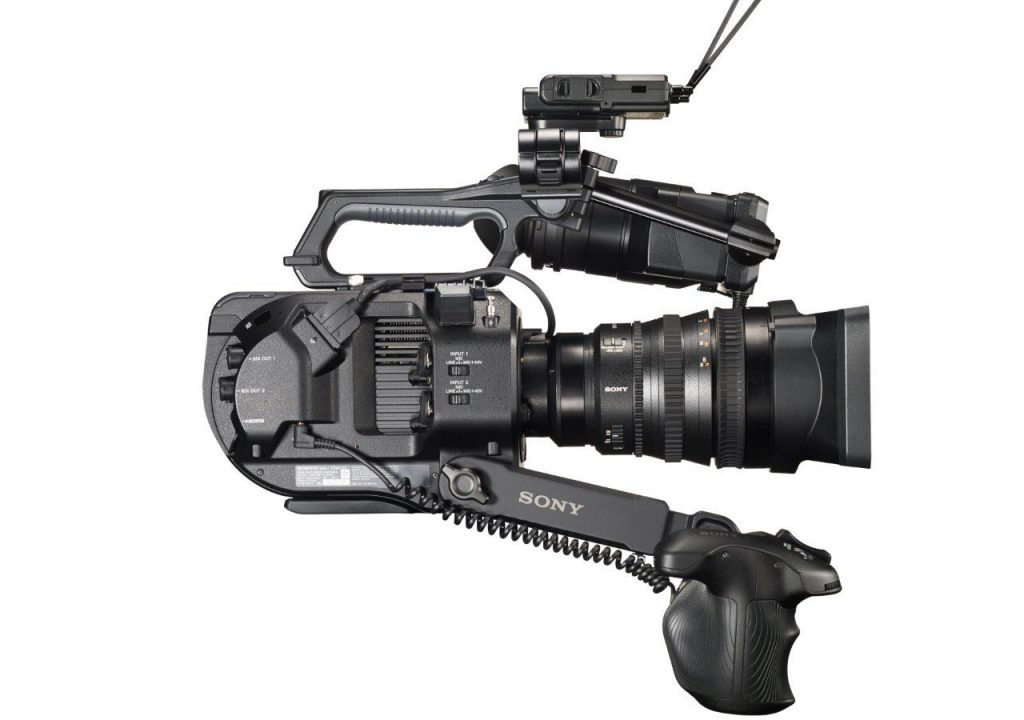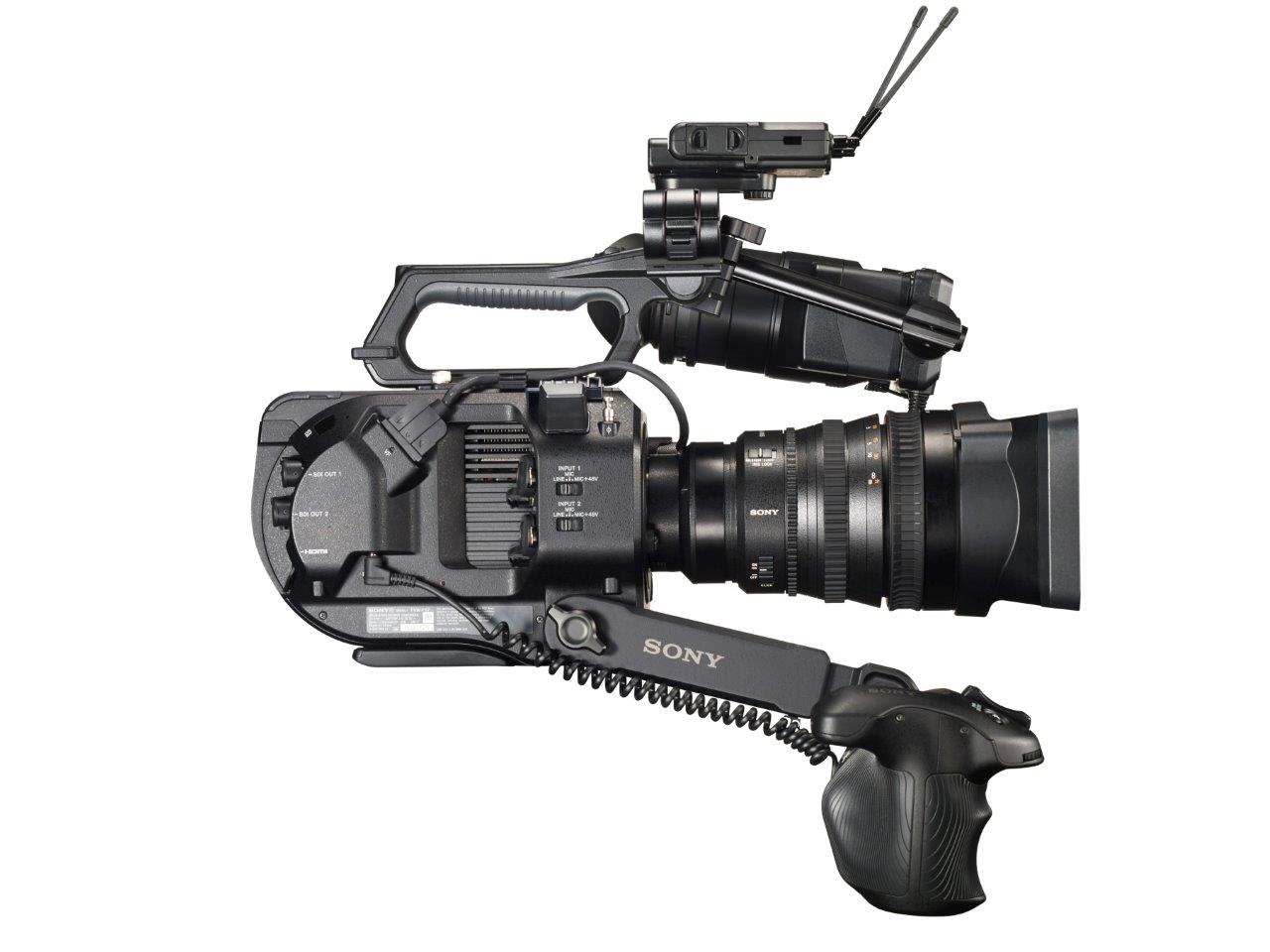 With articles like The Best Sony for Video and LUT Tricks for the Sony FS7/F5/F55, it’s no secret that we’re big fans of Sony cameras. Whether it’s their versatility, durability, value or all of the above, various PVC writers have found plenty to say about what they like about Sony’s various offerings and what they’re able to do with them.
With articles like The Best Sony for Video and LUT Tricks for the Sony FS7/F5/F55, it’s no secret that we’re big fans of Sony cameras. Whether it’s their versatility, durability, value or all of the above, various PVC writers have found plenty to say about what they like about Sony’s various offerings and what they’re able to do with them.
How these cameras are being used is an important topic, since models like the FS7 are at a price point that makes it available to a great number of people. This development, along with things like the proliferation of 4K and HDR, represent a paradigm shift that continues to change how media & entertainment professionals can and do approach their craft.
To explore what those changes mean to the people on the other side of the industry, we talked with Alec Shapiro, President of Sony’s Professional Solutions Americas, and Robert Willox, Director of Marketing. We discuss whether paradigm shifts are more about development or disruption, why the FS7 changed from the initial design to the final product, how they respond to claims that the push around 4K technology is just about the bottom line and plenty more.
As two of the leaders at Sony Electronics Professional Solutions of America, you’re obviously at the forefront around decisions that keep your products relevant and essential to industry professionals. Considering the speed at which technology changes, how do you approach staying ahead of the curve?
Alec: I think the foundation for the whole business is being open and listening to customers to give them what they’re looking for. In terms of how the market is going these days, I think you have to be willing to let go of successful products just as much as aggressively launching new products.
It’s tough for professionals in any industry to get their head around change, and it’s tough for us to give up a revenue-producing camera to introduce a next generation camera, typically at a lower selling point, but it’s absolutely essential.
Robert: And it can be very, very risky. We have customers who have millions of dollars invested in our equipment and you don’t want it antiquated too quickly. We’re very cognizant of where they are with the gear to try and give them a heads up around changes to make sure they’re on this journey with us. So the goal is to be aggressive but also understanding. This whole business is very relationship driven and you have to maintain those relationships.
It’s a fine line to walk, but if it were easy, everyone would be doing it.
Alec, you were instrumental in launching many Sony professional recording formats and technologies, including BETACAM® SP, Sony’s line of professional HDV™ products and the XDCAM® Professional Disc System. Do you view these sorts of developments as a continual progression, or do most new developments cause disruption that changes everything?
Alec: One of my main takeaways from the development cycle of the products you mentioned is that the camera alone does not drive the market. User interface and workflow are equally important, if not sometimes more important.
I’d say it’s about both progression and disruption if we’re talking about the impact these developments have. Betacam SP was an analog technology which was a big bulky camera, and HDV certainly changed the dynamics of the size of the camera. It was digital versus analogue, and it was a fraction of the price of Betacam SP. XDCAM was a disk-based format that provided workflow advantages over tape, so they were evolutionary changes, but because of the technology capabilities, it created a paradigm shift. Even today, based on user applications and price performance parameters, I would say companies like GoPro and RED have created paradigm shifts in terms of customer expectations and the applications that are addressed by the product.
Rob: It’s interesting to look at just the three you picked with SP, HDV and XDCAM. Betacam SP truly represented the pinnacle of analogue technology. To get the packaging to the size that it could fit into a camera and become such a good imaging tool really was a feat in and of itself. It was the limitation of the technology that dictated things like packaging and ergonomics. We could only do so much in that form and function, so the camera was basically just a recorder.
When you look at HDV, that became the great enabler for a whole new market of people. The cost of the Betacam camcorder was $40,000-$50,000, which obviously limited who could access the camera. So there was a huge well of people who had a creative energy and a desire to create content, but no opportunity. HDV changed the dynamic and created the first reality TV show. If you looked at SP, the price was just a non-starter. The price point for HDV allowed a whole new genre to develop. As news competed and news needed to get on the air quicker, things like multi-point editing became possible so XDCAM stepped in and became a force to be reckoned with. It became the next tier in higher quality, better looking programming for the masses.
They’re all evolutionary steps in terms of where we are today, which you can view as a progression, but the shift from one technology to another was at times very disruptive. The funny thing is we just put out a notice this year that the last piece of available equipment that can play a Betacam SP tape is still available for sale, but that chapter is coming to a close in 2016. So it’s a process that continues to this day.
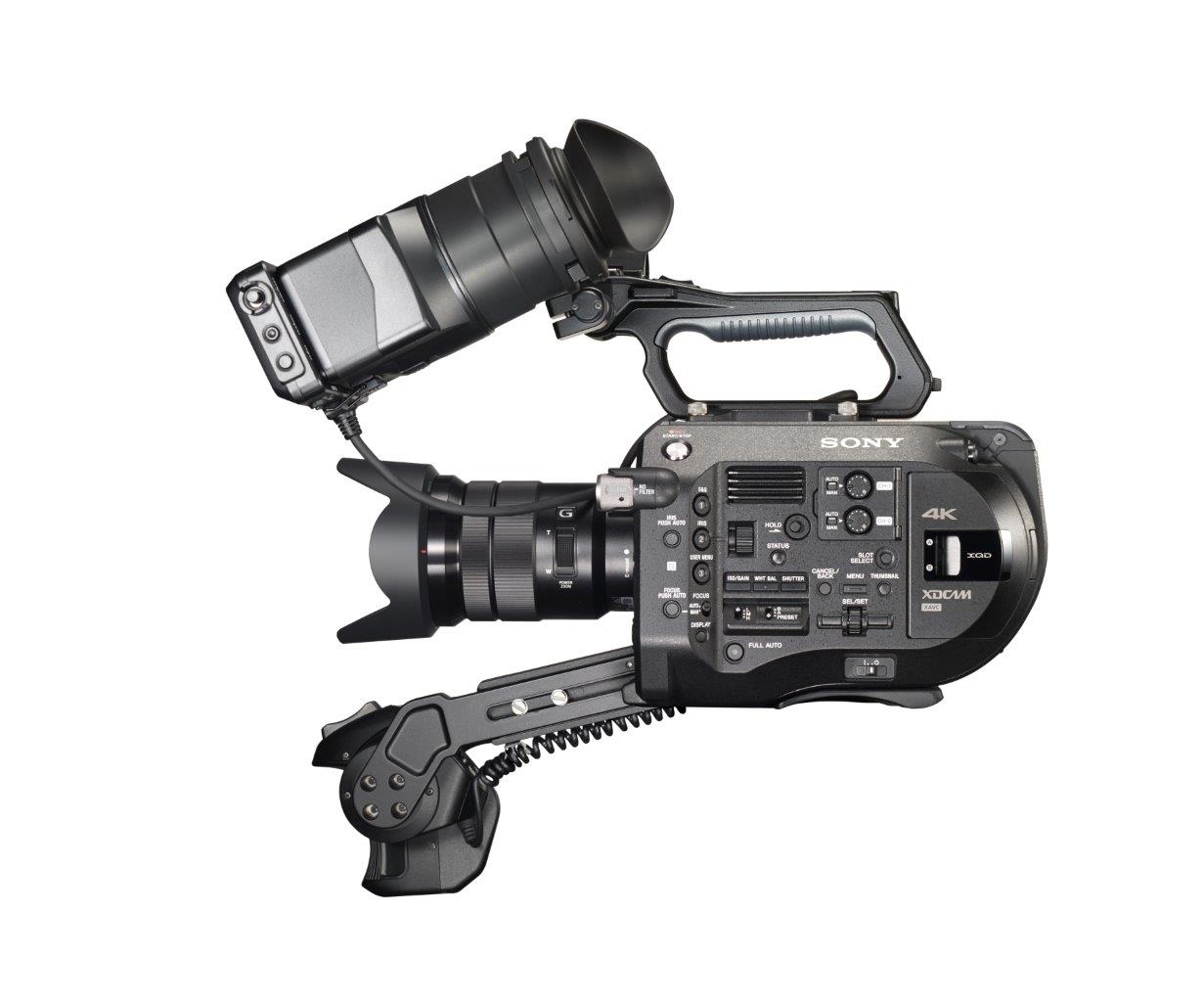 I’d be remiss if we didn’t touch on the FS7, as various reviews and even our own Brian Hallett have said some great things about the camera. What are your thoughts on the responses you’ve seen?
I’d be remiss if we didn’t touch on the FS7, as various reviews and even our own Brian Hallett have said some great things about the camera. What are your thoughts on the responses you’ve seen?
Alec: We certainly agree with Brian that it’s an amazing camera (laughs). I think it’s the perfect example of “cannibalizing” our own technology. The FS7 performs at a level that is comparable to other digital cameras that we have which cost 3x as much. It becomes an enabler as a high quality, high performing camera that puts a very powerful creative tool into the hands of many more content creators because of the price point.
Rob: The development of the FS7 was interesting in terms of where it started as an idea and what we ended up shipping. The idea around the form, shape and function of the camera at the beginning of the process looks very different from what it turned into. We actually have the 3D printed model of the first idea, and it was the customer feedback along the journey that completely changed that camera from its first iteration into a well crafted and thought out instrument.
We did a tour that was multi-city in the United States and multi-country across the rest of the world to get feedback from filmmakers, documentarians and other people who we thought would be eventually using the camera. The YouTube community was a very important part of that, and part of the launch was directly to that community. It was a truly fantastic feedback mechanism, and we literally talked to hundreds of people along the way. We went into NYU and had a feedback session around what they liked about cameras and what the price point needed to be for educators and people in the education community for it to be an effective tool. It was a very different approach for us, where we weren’t just asking the news community or working with a particular customer because they had a particular need. This really was a wide-ranging tool, and the scope of sales on the FS7 is much broader than Betacam ever was. We’ll probably sell more of these cameras in the first two years than we did in the entire history of analogue Betacam.
What were some of the things that stood out for you in that process? How has that feedback impacted what you have in mind for future products?
Alec: What we’ve experienced is a tremendous amount of interest in large sensor cameras. Further development of large sensor format cameras is clearly a current trend, so we’ll see more of that.
In terms of what stood out, I’ve been around for a long time, and I’m thoroughly amazed at the expansion of the market and number of people who are content creators at a professional level. We’re selling more cameras than we’ve ever sold in the history of the company. It just keeps growing exponentially every year, based on new price points and performance capabilities of these cameras. So it doesn’t seem like there’s any end in sight in terms of what the future holds.
The distribution outlets provided by the Internet have been a game-changer as well. With YouTube, anybody can become a very successful video producer and build a huge following. Almost anybody can earn a living as a content producer if the have something of interest that’s relevant to a particular community or audience.
Rob: There are certain things that we bring to the table but we’ve got to be cognizant of the things that hang off the camera, as well as the workflow people who use the camera. We like to think that it’s our monitor and our lens and other accessories that everyone is going to use, but it’s not. We have to be able to offer a tool that works well with the Zacuto’s and other manufactures of the world, and it takes time to gather all of that and figure out what those needs are.
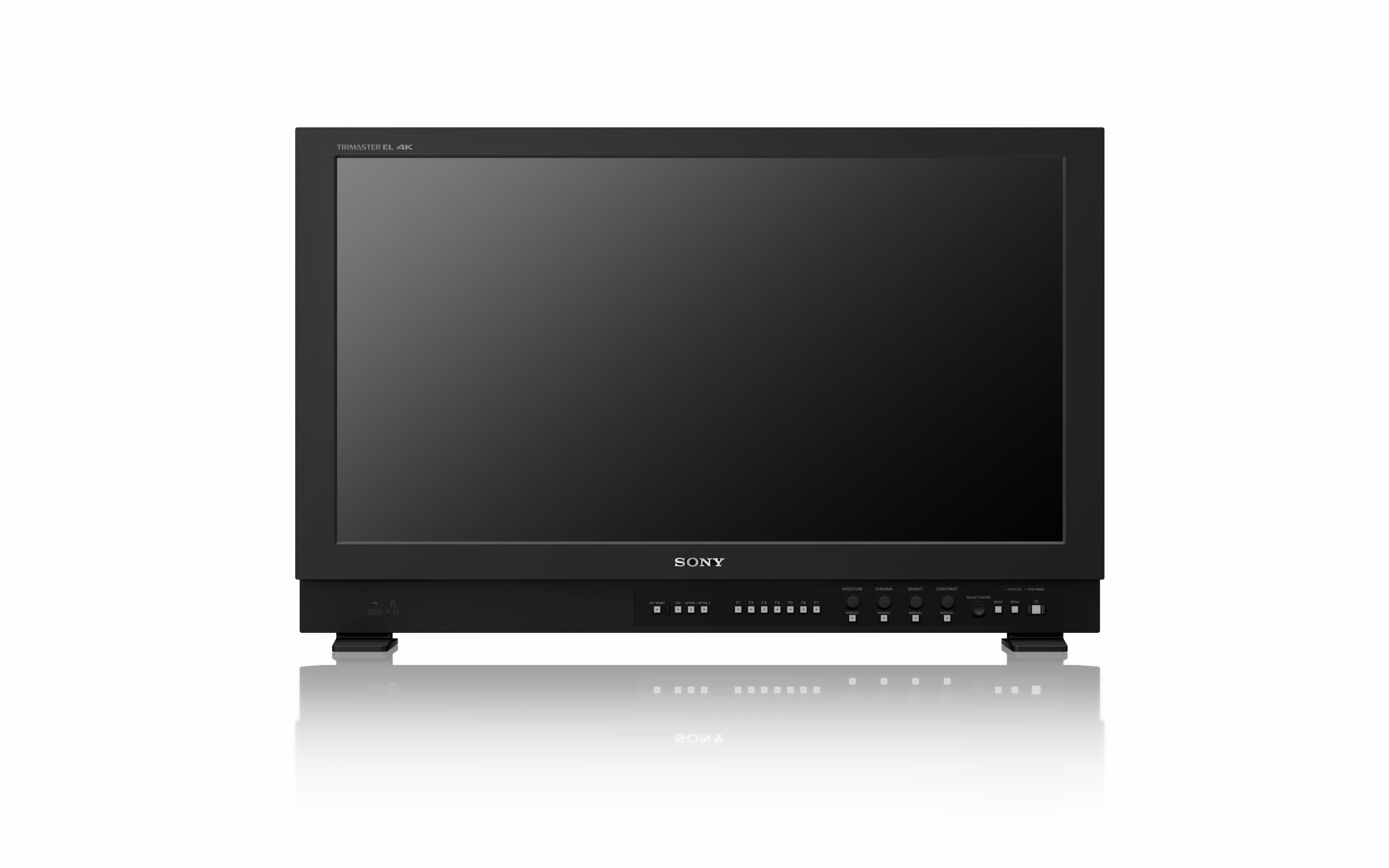 That progression of technology leads us into what I wanted to talk about next, which is 4K. What are your impressions around how that technology is being seen and embraced by content creators and consumers?
That progression of technology leads us into what I wanted to talk about next, which is 4K. What are your impressions around how that technology is being seen and embraced by content creators and consumers?
Alec: The interest is growing, very clearly. A big driver has been Internet distribution like Netflix, Hulu, etc. It’s interesting that most of them really don’t have much of a 2K infrastructure, so they’re starting at 4K. Pretty much all of their original programming is shot in 4K. Frankly though, a lot prime time TV content is also being shot with our F55 cameras, which can output both 2K and 4K. Some programs are finding an additional life on Netflix in 4K that produces additional revenue.
I think that as the home TV screen becomes larger, the desire for higher resolution and better picture quality is going to become greater. I can tell you that I personally just began appreciating 4K. I’m not watching 4K on my 4K TV, but I am watching up–resed images. I have a 65” 4K Sony TV, and I’m blown away by the picture quality of what I’m watching. The level of detail, the contrast in the picture…it’s pretty incredible.
We’re also working with professional sports in terms of rolling out 4K cameras for sports production. Again, you’re not necessarily seeing a 4K picture at home, but when you’re watching in slow motion you’re seeing images that are shot in 4K, so you get far more detail.
Rob: From a storytelling perspective, when you’re watching a replay, you have the ability to selectively zoom into areas of interest. As a Canadian my first love is hockey, and watching the playoffs this year I could see them take that shot from the goal all the way up to the center line from behind the net, watch the entire play develop and then selectively zoom in on areas as that play goes. From a storytelling standpoint, you can really get the analysis that you couldn’t get any other way.
The interest in 4K is one of the few things that the consumer reporting agencies have consistently underestimated. They’ve underestimated the sales of 4K TV’s for every quarter they’ve been available. Televisions are selling incredibly well, and the price points have dropped so it’s almost a no-brainier to pickup a 4K TV if you want a set that’s 65” or over.
How do you respond to critics who maintain that the push to 4K is coming from a desire to sell more products rather than give users and their audiences something they actually want?
Alec: I call 4K progress.
I think from the beginning of time, consumers have always demanded more. From a marketing perspective, the mantra is always, “better, cheaper, faster.” If you get two out of the three you have a hit product. That’s the nature of the consumer public. There’s always a demand for higher quality, for faster access, smaller packaging, less expensive gear, etc.
Yes, manufacturers are trying to sell more products, but they’re also being driven by a public that wants more. I can assure you that when we have 8K cameras and 8K TV’s, we’ll be having the same arguments, but as the screen sizes keep getting bigger, the demand for higher resolution will also continue to increase.
Rob: We’ve put cameras at the bottom of the ocean and into orbit. We’ve captured some never-before-seen history in the past few decades, and that history needs to live for all time at the highest quality possible. When you look at the images of the Moon landing or just some sports footage from fifteen years ago you can see the difference in quality we’re dealing with. Truly, it’s better to preserve everything at a higher resolution so that we can utilize these images for a much longer time.
We work an awful lot with stock houses, and they’re the ones who have been asking for 4K and the highest resolution possible. We’re quite open to the fact that we’re on our way to 8K and beyond with many demos, including showing 8K live this year at NAB.
We see it as part of our social responsibility as well, to be able to create the best imaging equipment that we can and make it affordable. It’s easier and cheaper to create 4K images today than it was to create those same images at HD five years ago. Alec and I did a 4-day shoot in Hawaii using two 4K cameras, edited on a laptop and turned around in 24 hours to show a group of executives how far 4K had come. It was quite successful and breathtaking.
At NAB this year, a comparison between a conventional TV and one that was outfitted with HDR was on display in the Sony booth. What can you tell us about your product’s HDR capabilities?
Rob: We’ve been able to have cameras that have a much greater exposure latitude than we could record for a number of years. We developed circuits like HyperGamma and S-Log to be able to use available recording technology to record very high dynamic range objects. We now have the ability to record 16-bit RAW on the F65 and F5 and 12-bit RAW on the FS7 and FS700. Now we have formats that can capture much more than our 10-bit formats could.
On the front end of the equation, we’ve had HDR capabilities starting with the F65, and the F950 before that could do it. It was on the display side where we had the issue. The issue was around developing a consumer display and a professional display that can have the nitz to be able to show you that much contrast. We introduced a consumer 75” TV this year that has that type of contrast range and our first in what will likely be a series of BVM level OLED monitors that have the capability to do that type of mastering.
The thought of the transmission for HDR is behind and being baked into many of our new products. The HDC-4300 also has the capability to transmit S-Log back to a switcher to allow you to switch live to an HDR program. So we’re already thinking in that direction, and all of our new products will have some consideration for it built in.
Alec: And I would be neglectful not to mention that we have 4K projectors installed in about 15,000 screens in the United States. Practically all of the AMC and Regal theaters have them, along with various other chains. Those 4K projectors are more than capable of playing back a motion picture shot with our cameras in HDR.
We talk a lot about 4K in these parts, but in some ways it seems that HDR might be the more compelling technology. But it’s not a question of either/or when it comes to HDR and 4K, is it?
Rob: The wildfire that HDR has become is interesting. It’s on every content producers mind, and anybody who’s making a show that’s going to have a long shelf life is taking a look at how they can do it. Your question gets to that, since HDR is a factor at 2K and 4K, because even people who are doing HD now want to have the ability to do an HDR version of the product. If it’s based on 2K, you can use the packaged media that we have today.
Another part of it is that 4K brings with it a new SMPTE color standard, which is a much wider footprint. We had a very simple display at NAB on a camera set with Rec709 out, and the same camera, same scene, with Rec2020 out. Attendees took one look at that color and just said, “that’s what I want.”
As a manufacturer, the desire to sell products is always going to be there, but being able to make that kind of an impact on content creators is very important to us.
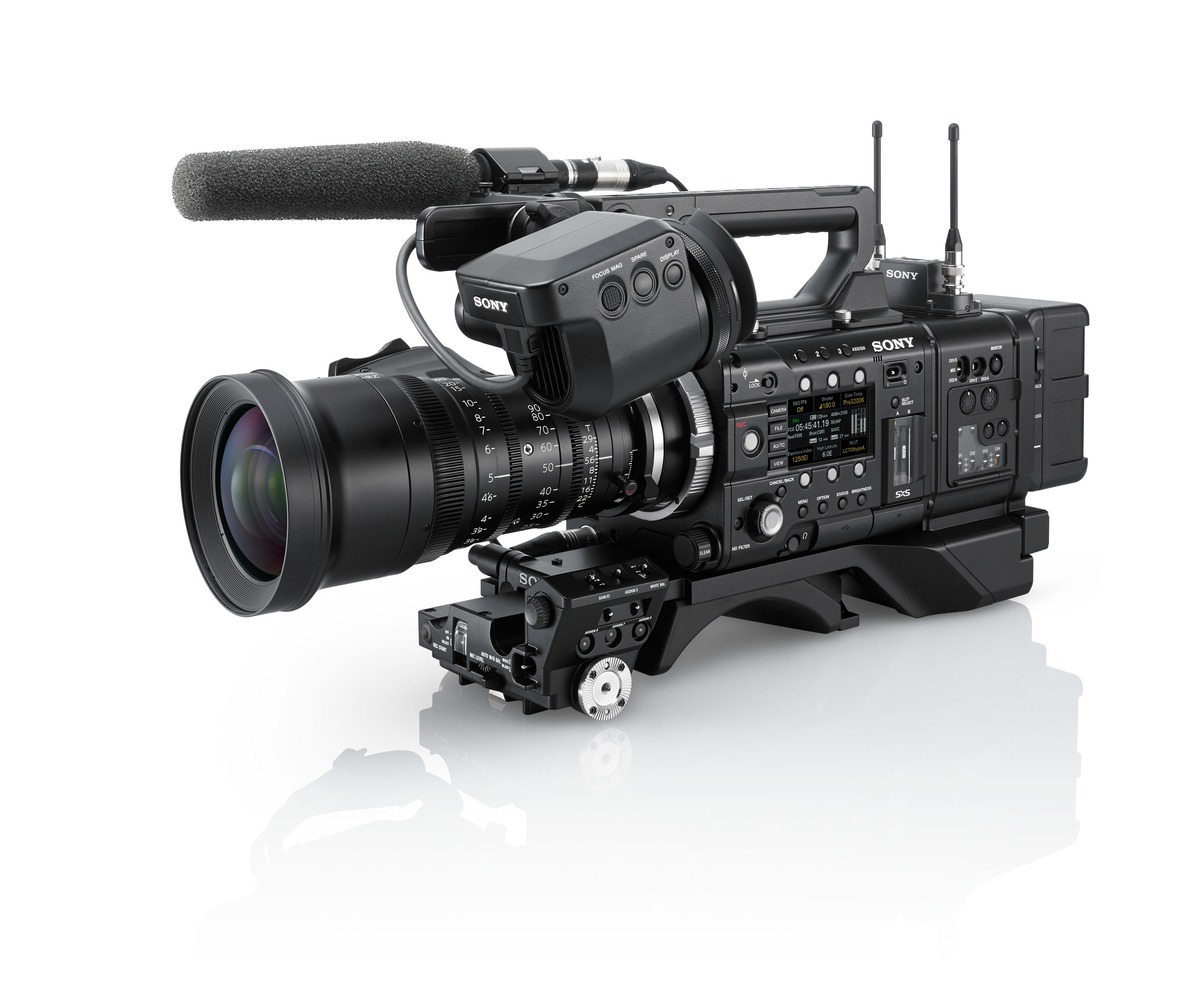 We’ve talked a lot about how customers influence your products, but outside of the road shows you mentioned, where else are you gathering and soliciting that feedback?
We’ve talked a lot about how customers influence your products, but outside of the road shows you mentioned, where else are you gathering and soliciting that feedback?
Alec: In Los Angeles at the Sony Pictures lot in Culver City we have the Digital Motion Picture Center that we established a little over three years ago. We’ve had over 2,000 industry professionals go through the Motion Picture Center for training on our cameras, which is everything from our alpha still cameras to the new FS7 and of course the F55 and F65. That input we get from professionals in that environment is a critical factor in the development of our next generation of cameras.
Rob: The conversation with the guilds has changed so much over the past decade. As an aggressive manufacturer we wanted to put our images against traditional analogue images of the time, and we took motion picture on like we would a format war. Once we discovered that wasn’t really in anyone’s best interest, we started a strong dialogue with the ASC and other guilds. We developed long partnerships to work with organizations like AFI to use our equipment, give us feedback and get these products in users hands to really help us develop the next generation of equipment. We have partners in the rental companies so we’re putting this equipment into productions every single day and getting feedback around the materials we’re using, around the environments they’re being used in, etc. We’ve taken that feedback and have listened to it very carefully to create the devices that we’re manufacturing today.
What do you want professionals thinking about when they’re considering whether or not a Sony camera is going to be a fit for their project?
Alec: It’s a little publicized fact, but Sony is by far the largest manufacturer of image sensors in the world. Last I heard, we manufacture close to 30 million sensors per month. Not just image sensors for Sony. We supply image sensors for many of our competitors. Our image sensors are in products ranging from cell phones and projectors to our highest performing cameras. So when it comes to engineering expertise and prowess in creating images, I don’t think any other company comes close to the capabilities that Sony has as a company.
Rob : We have a couple partners that market our gear, and they’ll be able to help you test the features and limitations of the technology to help you make the right choice and you can always connect with us on social media.

Filmtools
Filmmakers go-to destination for pre-production, production & post production equipment!
Shop Now